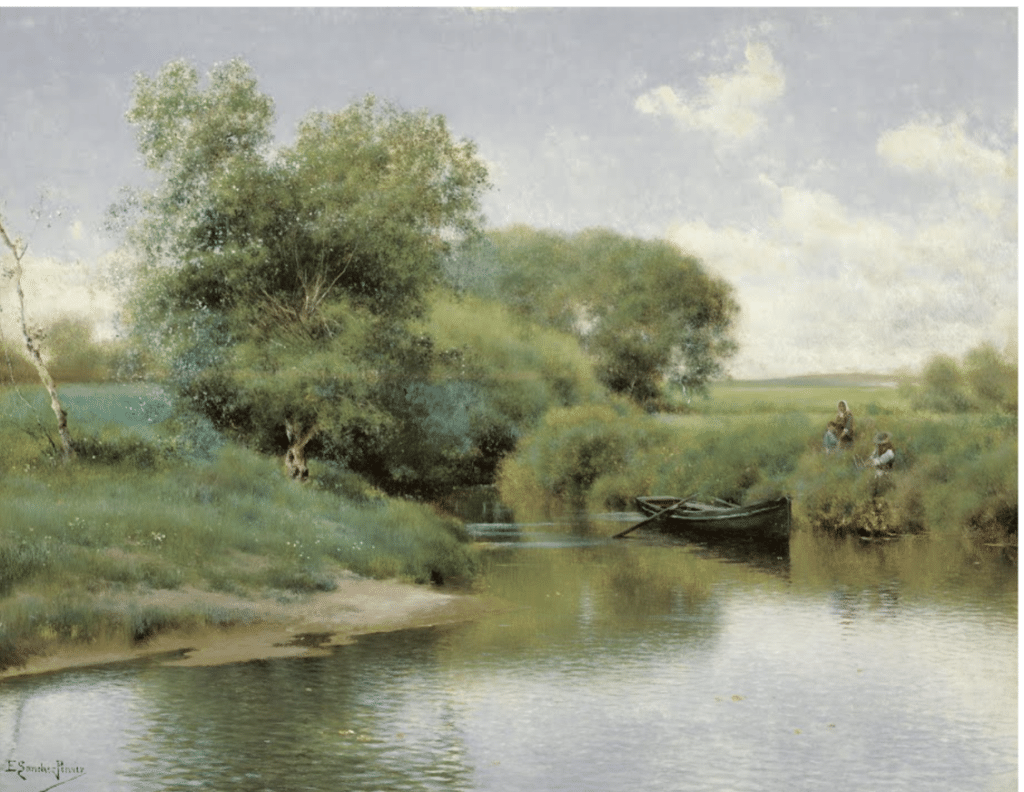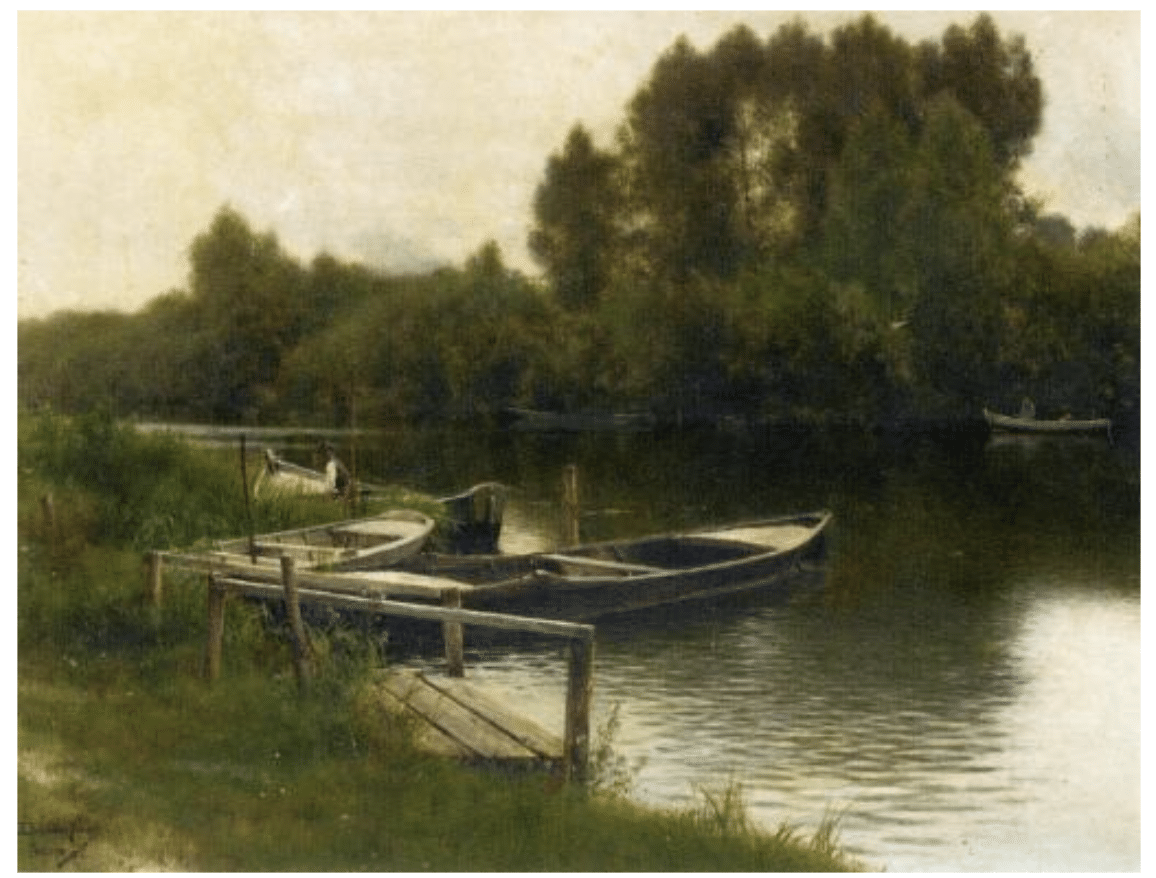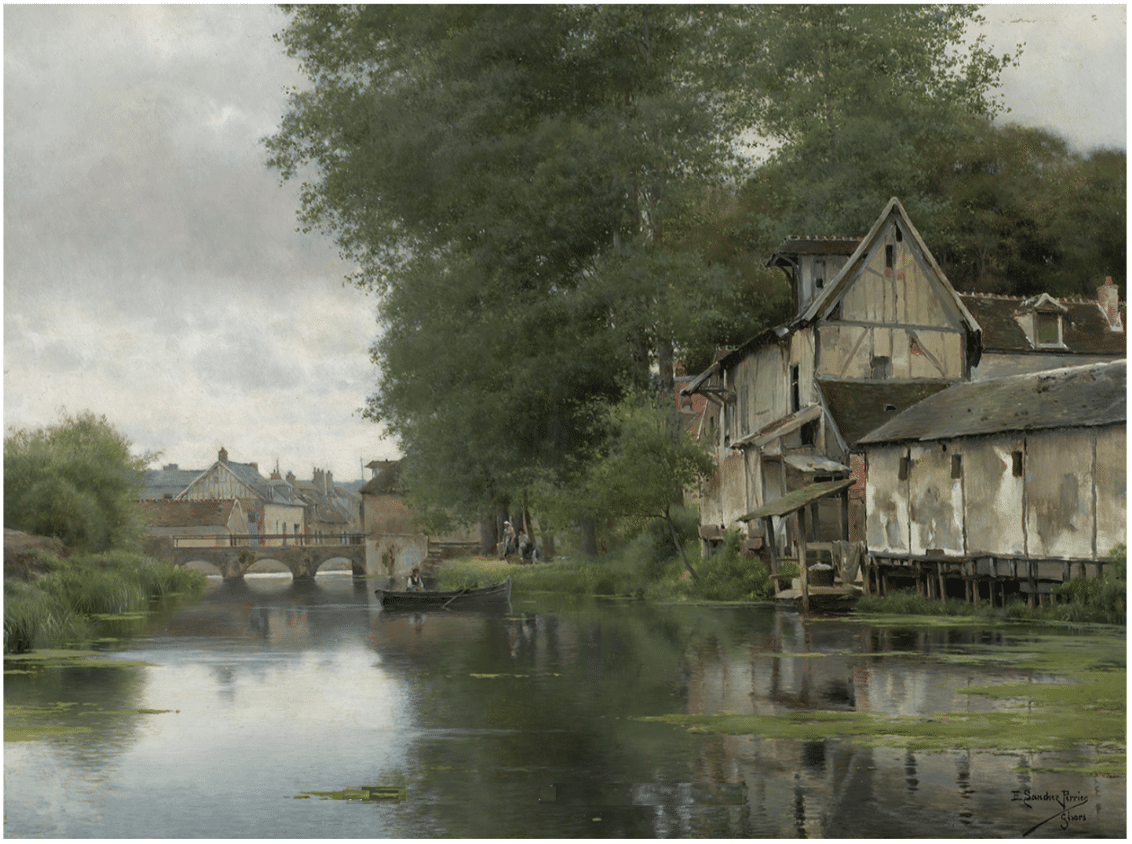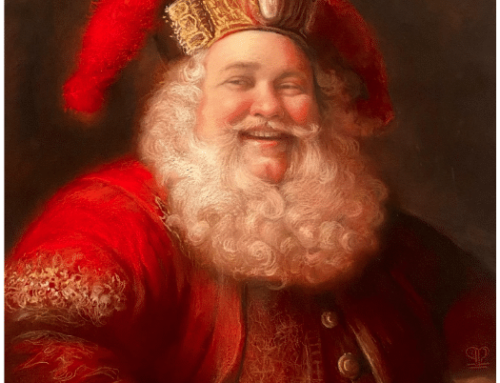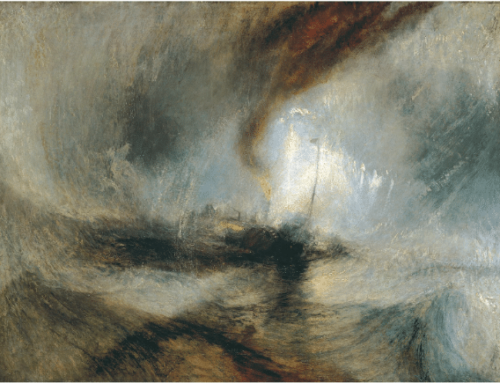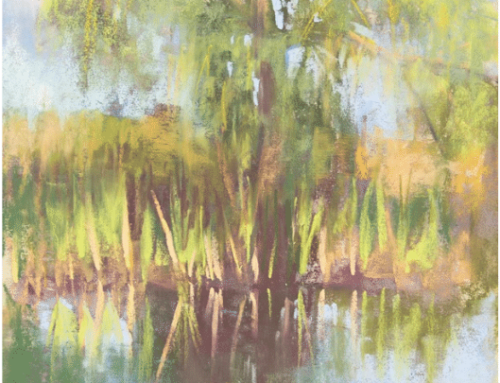Compositions like the one that Spanish realist Emilio Sánchez Perrier (1855 – 1907)
employs in The River Gisors (above) look impossibly complicated. Where do you start? If we simplify to the basic principles involved, we can break it down and then extend those principles to our own work.
There are two principles of composition that might be all you need. They are the “Steelyard” composition and the “radiating” composition. Either one works on its own; the possible variations on them are endless. And in subtle combination they’re a one-two knockout punch.
These thumbnail diagrams are from the Edgar Payne classic “Composition of Outdoor Painting.” There are two compositional strategies, the “Radiating Line” and the “Steelyard” followed by two examples of the composition in action.
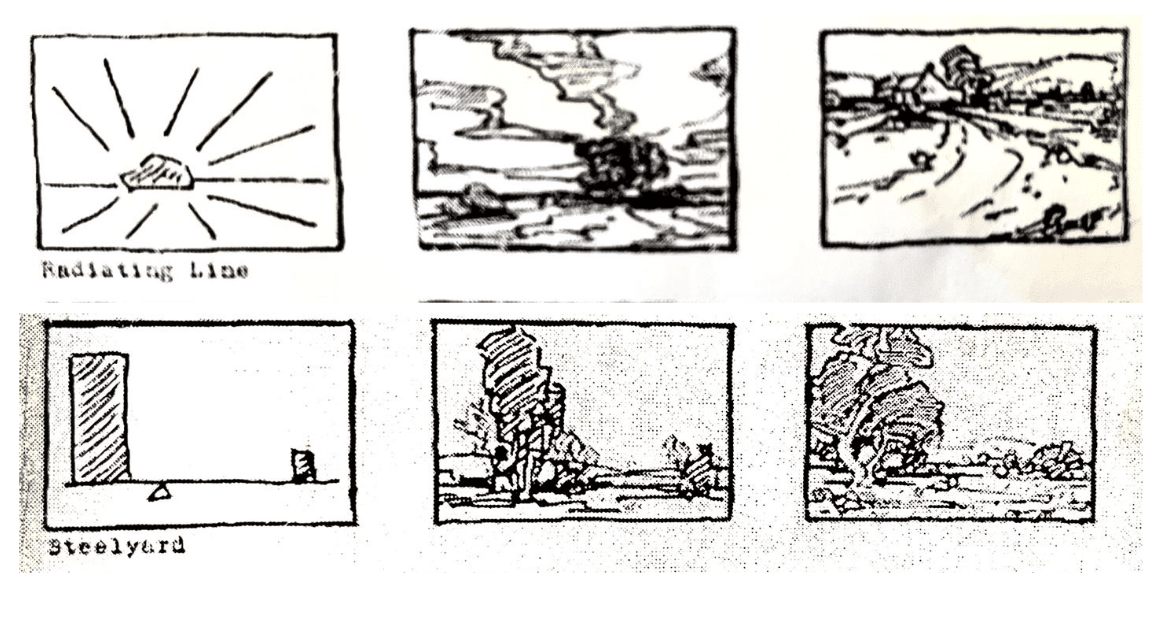
These thumbnail diagrams are from the Edgar Payne classic “Composition of Outdoor Painting.” There are two compositional strategies, the “Radiating Line” and the “Steelyard” followed by two examples of the composition in action.
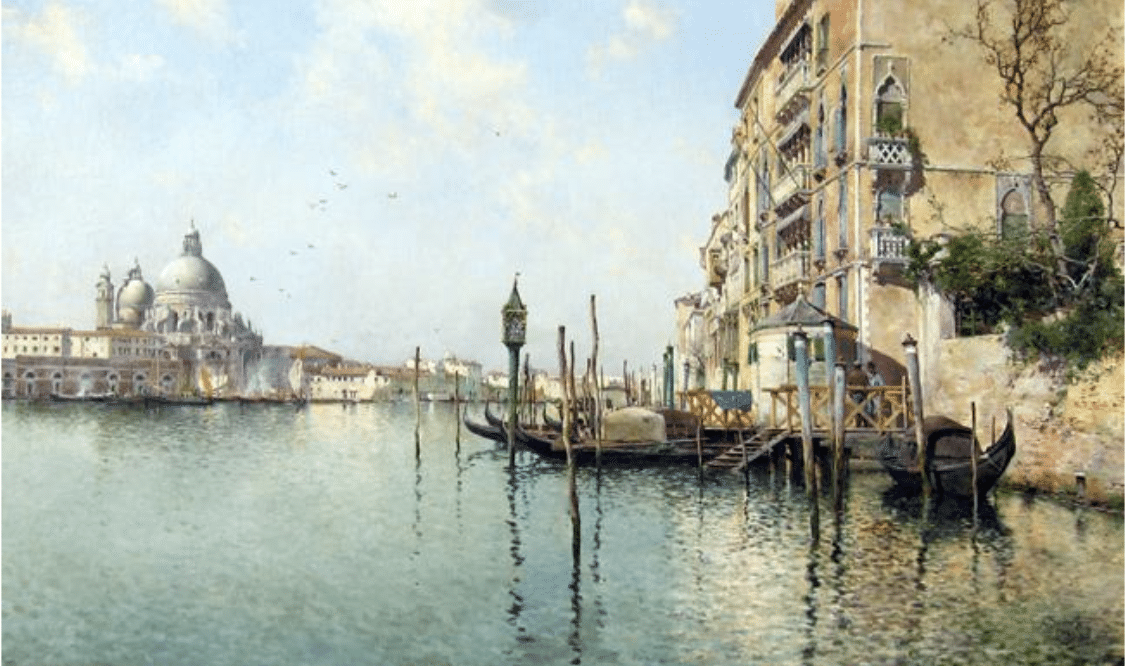
This one’s often confused with the “L” type – the difference is that in Steelyard a large dominant form is counterbalanced by a small subdominant element. In the painting below – an interesting example because it’s vertical not horizontal – the subordinate element is the unexpected group of buildings to the left of the off-center dominant tree. Because it’s vertical though, it could qualify for the “L” designation too, I think.
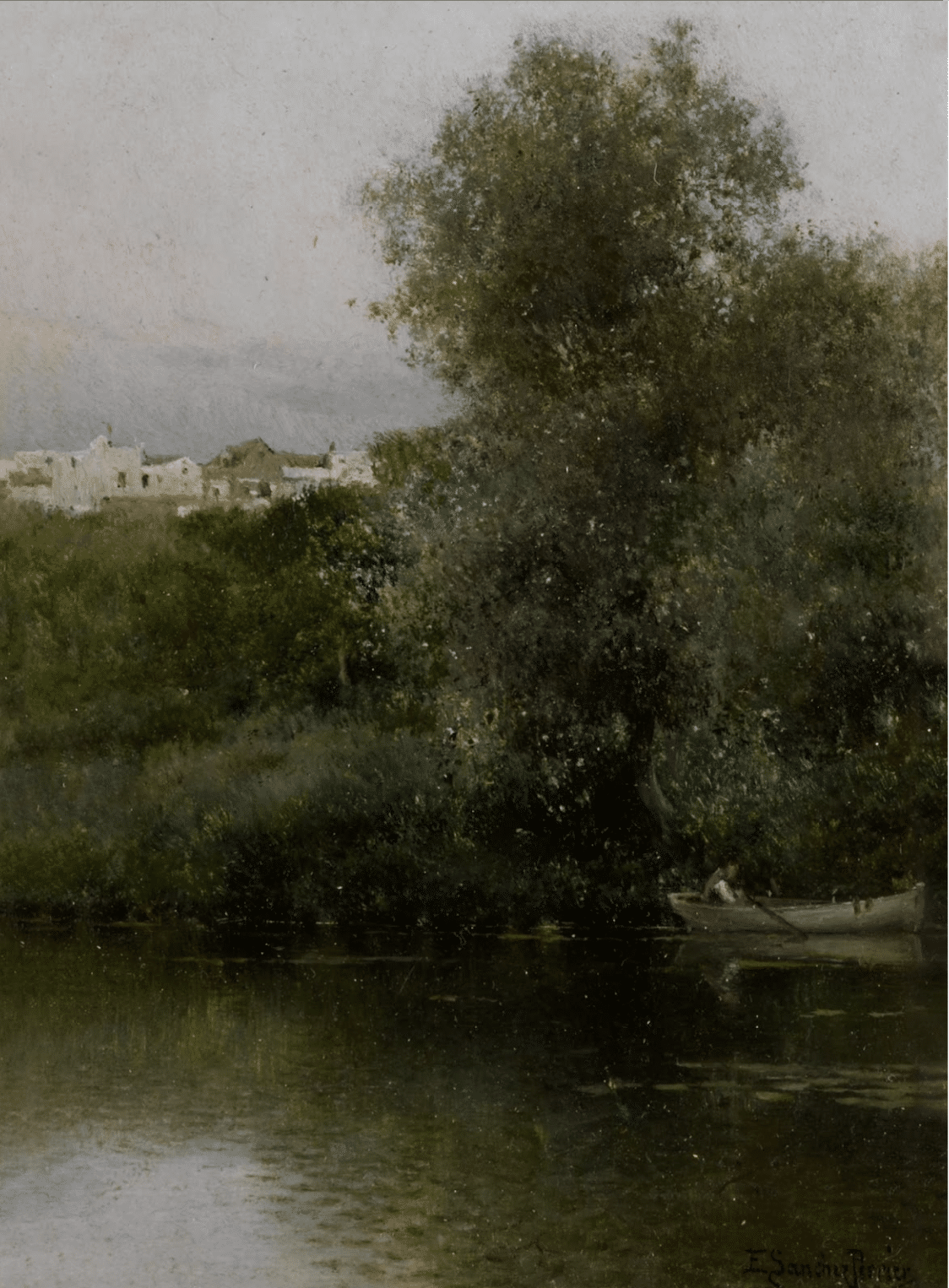
The painting below also makes use of a Steelyard and radiating line composition combined. (Although the titles weren’t always available, all of the paintings here are by Sanchez-Perrier). In the diagram below, the Steelyard version is outlined in white and the radiating lines are in yellow. By the way, Sanchez-Perrier was primarily a plein-air painter! He painted most of these on “artist board” much like today’s canvas panels, most sized around 15 in x 22 in.
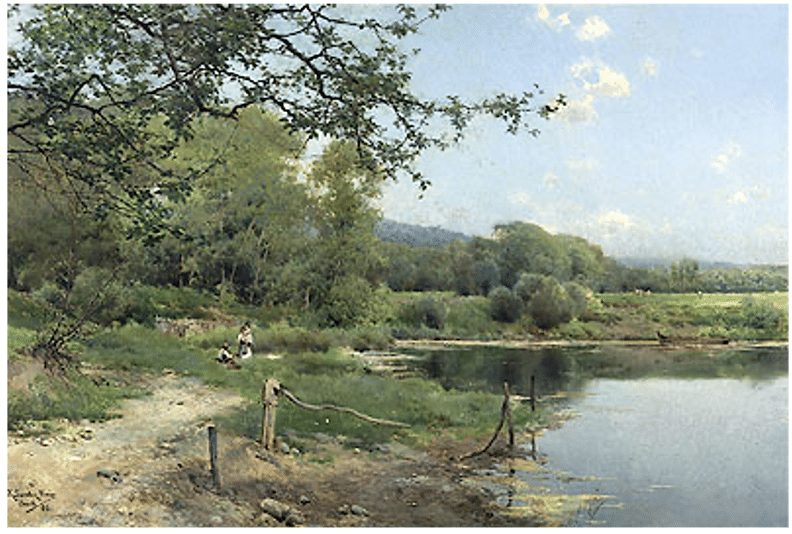
EMILIO SANCHEZ-PERRIER, Alcalá de Henares, Oil on panel
15 3/4 x 22 inches (40.01 x 55.88 centimeters)
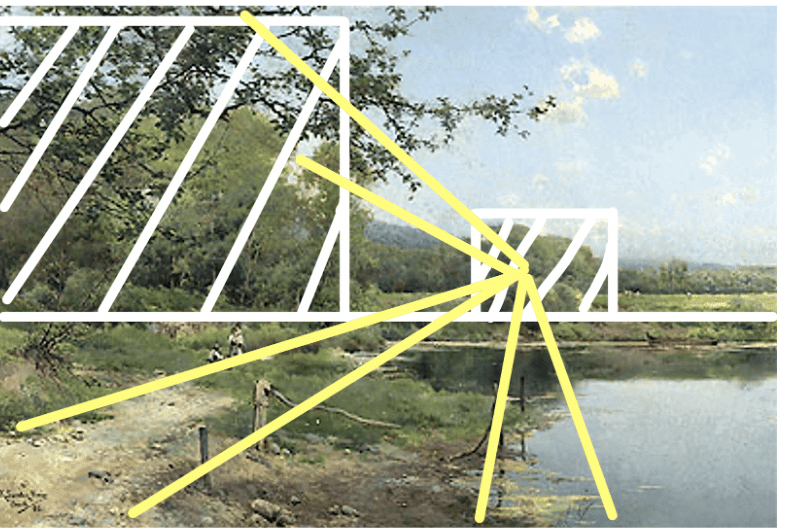
Both of the paintings below can be said to incorporate some use of radiating line composition combined with other strategies:
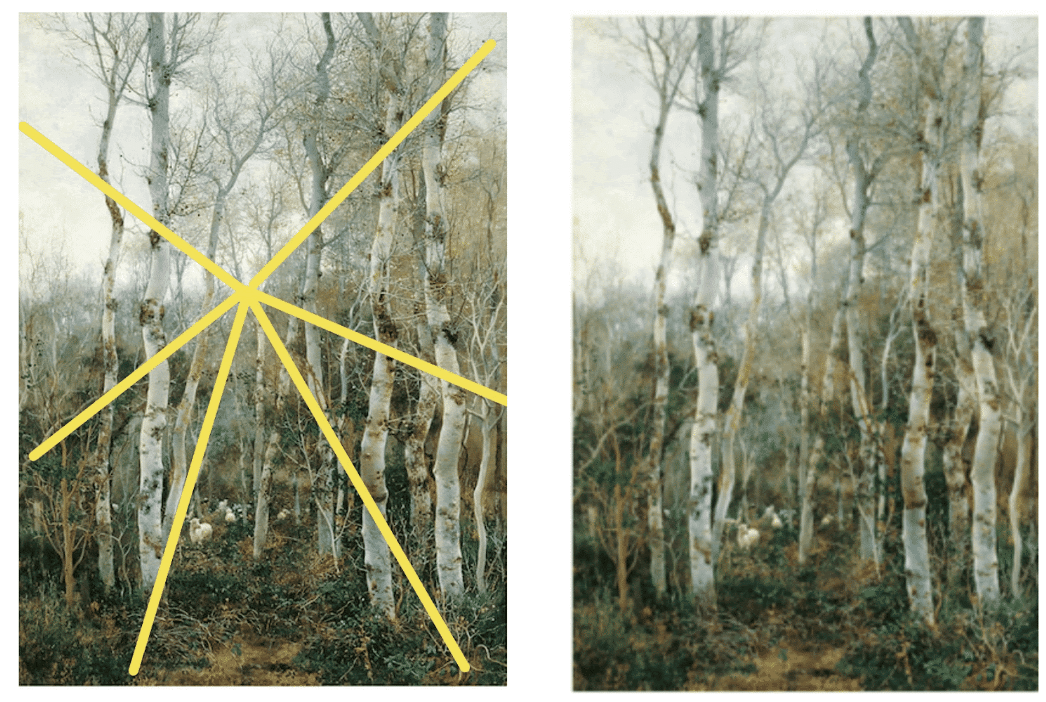
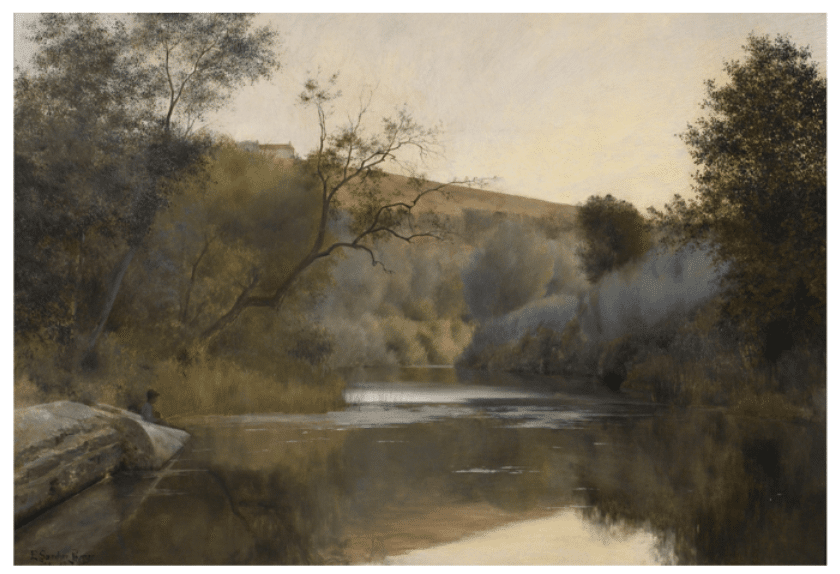
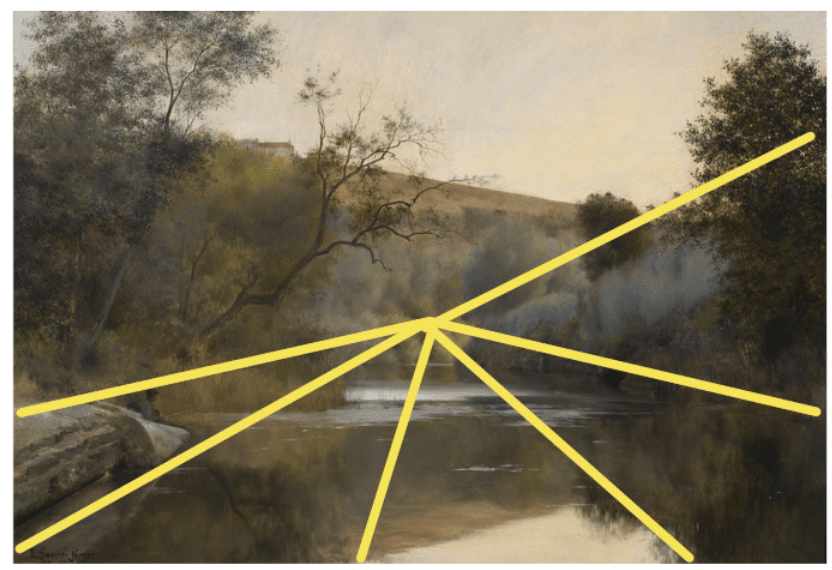
Sánchez-Perrier grew up in late 19th century Seville where as a boy he helped make clocks at his father’s shop in Calle Sierpe. At the age of thirteen he attended the School of Fine Art in Seville and later moved to Madrid to study. He took part in exhibitions in Seville and Cadiz in 1877, 1878 and 1879, winning the first prize at the Regional Exhibition in Cadiz. In 1878 he debuted at the National Exhibition of Fine Arts in Spain, and that year he moved to Paris to pursue his studies in the European artistic capital. There he painted in the studios of the reverec Jean-Léon Gérôme and of Félix Ziem. Though Sánchez-Perrier would return to Spain, he made frequent visits to France, where he fell under the influence of the Barbizon School, and of Corot in particular.
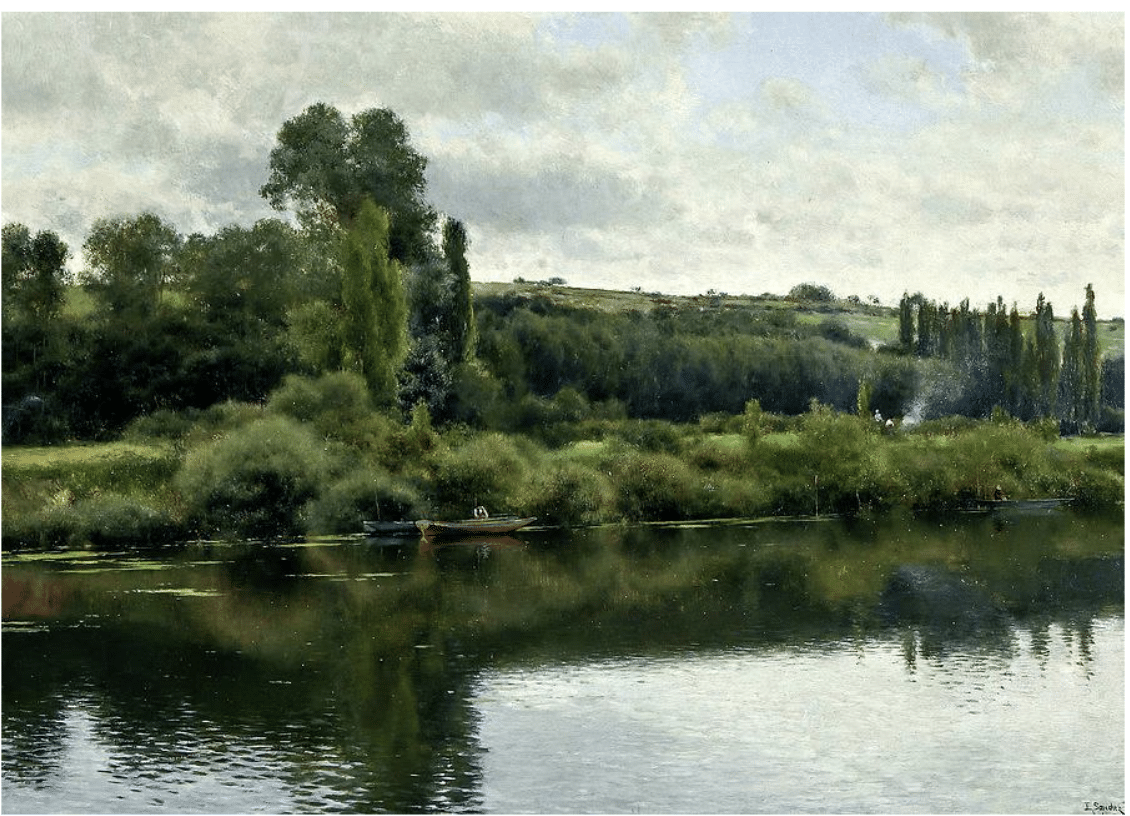
Emilio Sánchez Perrier, Stream (Rio Henares, Alcala), oil, approx. 15 x 22 in.
While the light in his landscapes is distinctly southern, the liveliness of his trees, the crystal clarity of his rivers and ponds, and the appeal of his landscapes reveals the influence of the French master.
He made his debut at the Paris Salon of 1880 and exhibited regularly abroad, winning awards at the Paris Salon, the National Exhibition in Madrid, and generally meeting with great success in Europe and in America. Sánchez-Perrier was made a member of the Société General des Beaux Arts in France in 1894 and a member of the Seville Academy of Fine Arts in 1903.
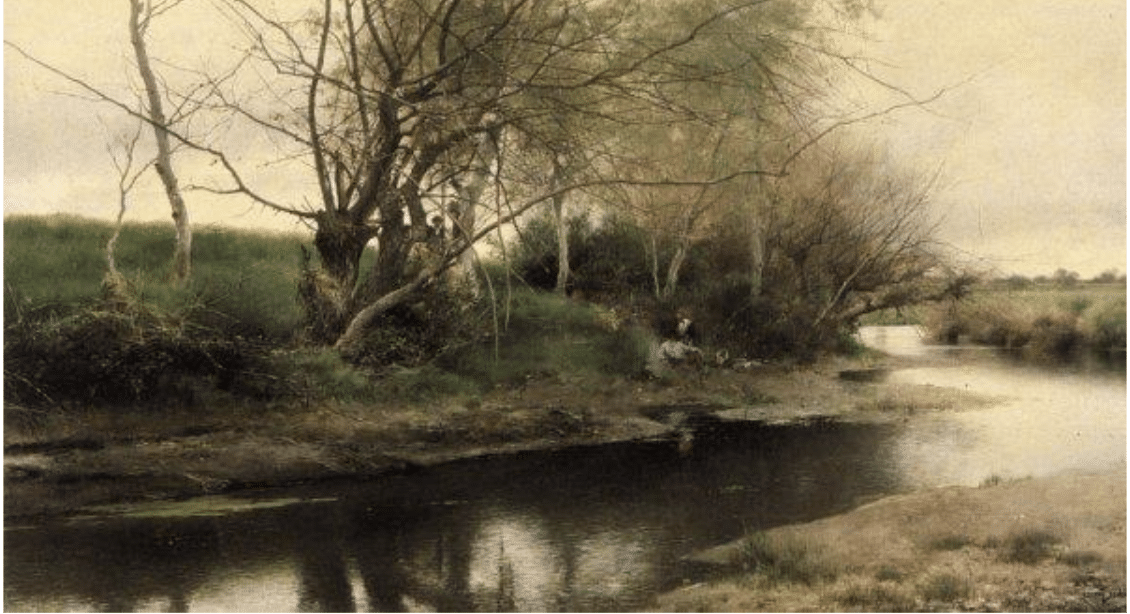
Emilio Sanchez-Perrier, Feu de camp au bord d’une riviere, oil, approx.. 15 x 20 in
His works are collected by Museo Nacional del Prado, Madrid; Akron Art Museum, OH; Heckscher Museum of Art, Huntington NY; Museo Carmen Thyssen, Malaga; Musée Camille Pissarro, Pontoise, among others. He’s represented in America at Rehs Gallery in Rhinebeck, NY.
